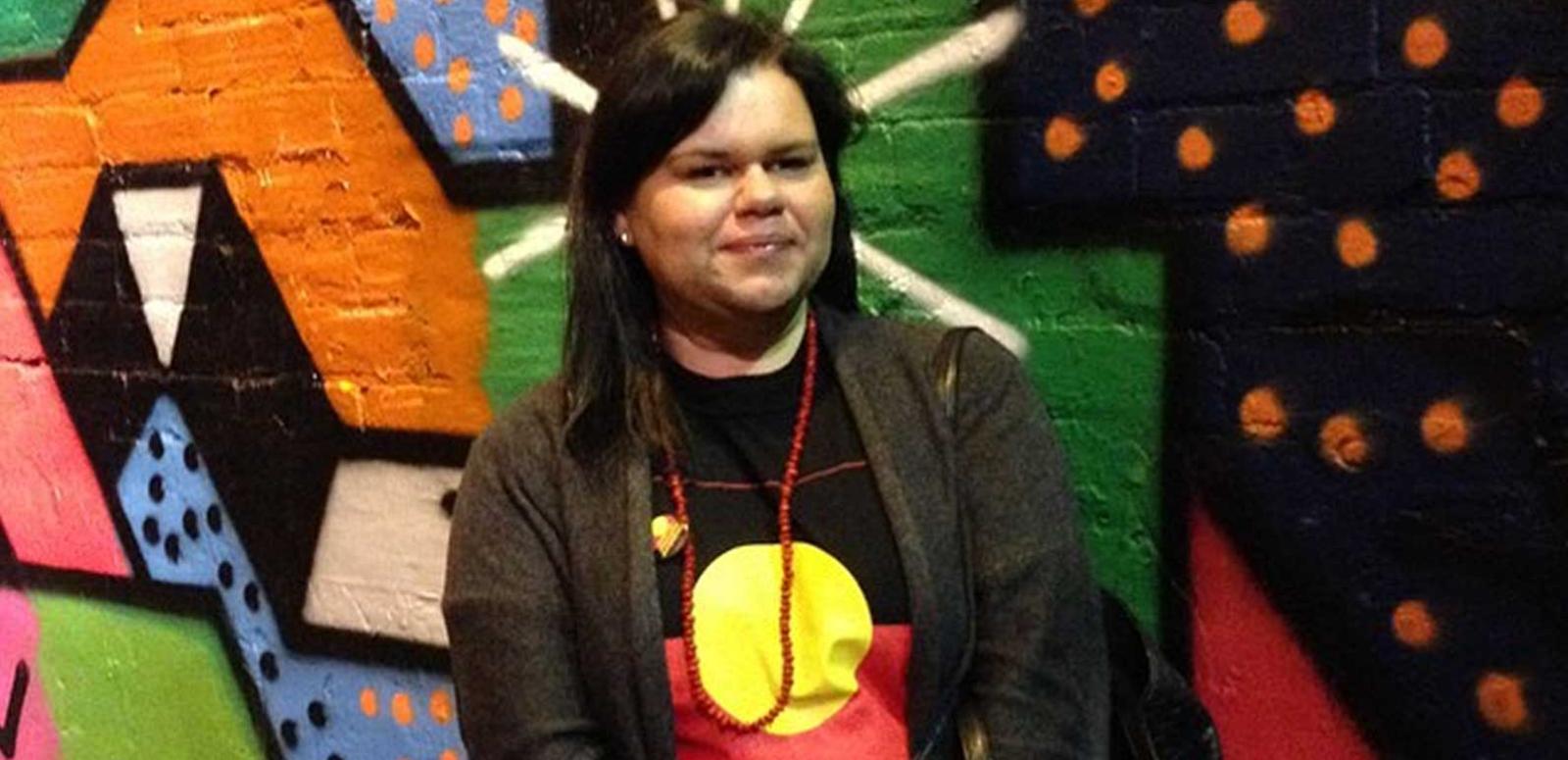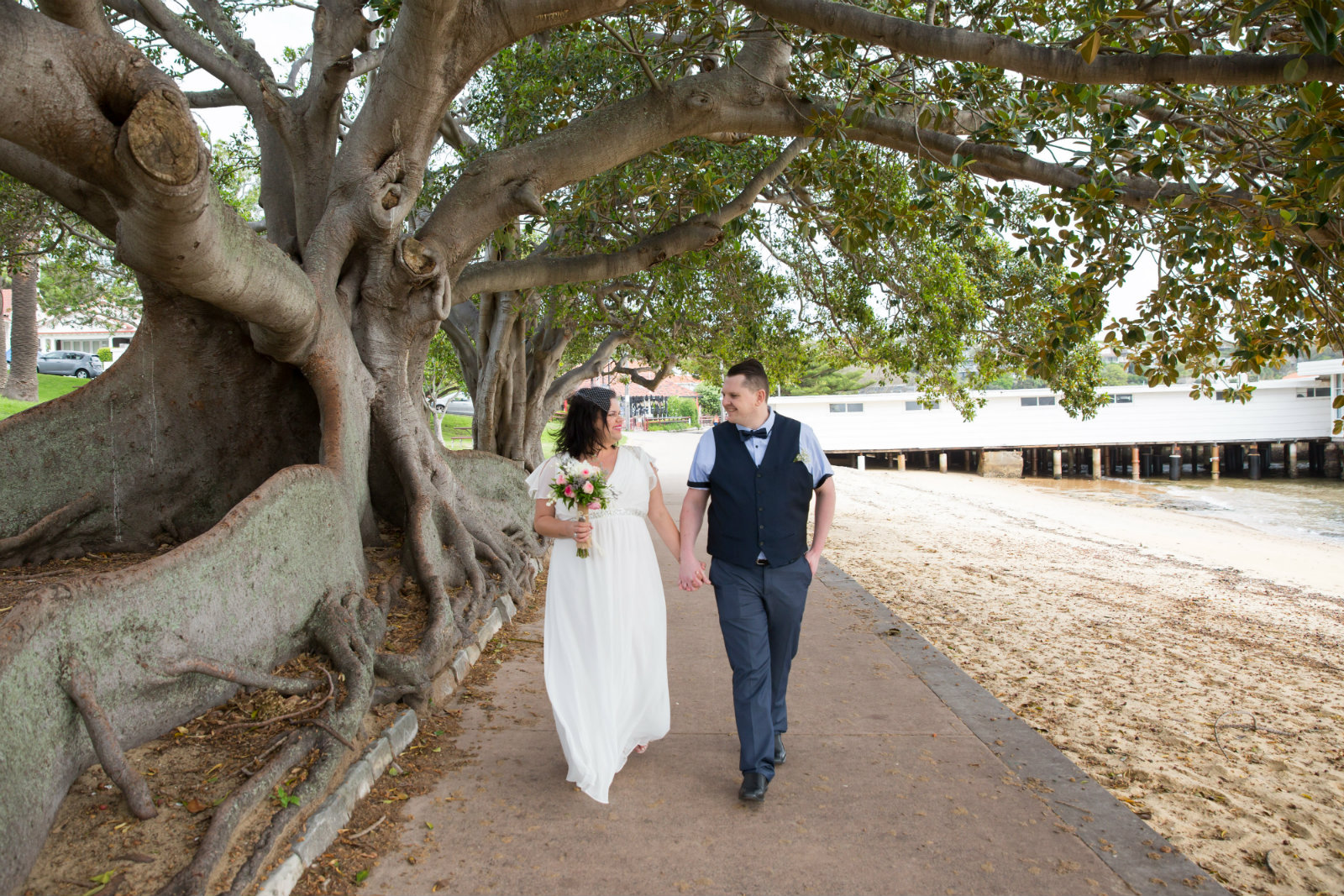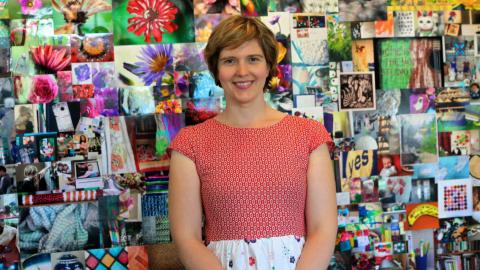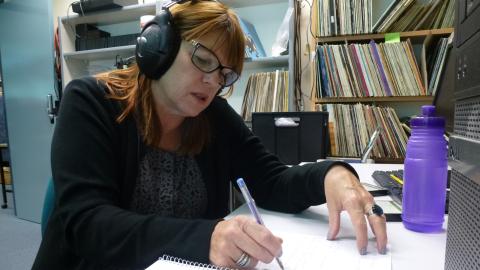

Staff Profile: Tasha James
The NFSA’s Indigenous Connections Manager, Tasha James, is a proud Wiradjuri woman. Her family hail from the Bogan River region in central-west NSW. Born and raised in Dubbo, upon leaving school Tasha answered an ad in the local newspaper for a traineeship at the council and there began her career with the public service.
Beginning in administration Tasha moved into records management and credits that with fuelling her interest in archival work. ‘My family is quite close and from a young age I always knew who we were related to and where we came from … I think the family history side was a personal interest that carried over into record keeping and wanting to help others in my family and community know how to preserve our history.’ Some archival studies courses through the National Archives of Australia increased her interest further.
TRAVEL, WORK AND MORE TRAVEL!
After nearly 10 years with the Council Tasha, who had never lived outside of Dubbo, decided there was a big world out there and, not content with a move to perhaps a bigger Australian city, moved to Ireland for a year! She worked in a series of jobs; hostel receptionist, tele-sales and weekends in a nightclub.
Returning to Dubbo, Tasha was home for just six months when a friend suggested she apply for an Access Officer position in the audiovisual archive at the Australian Institute of Aboriginal and Torres Strait Islander Studies (AIATSIS). It was in this position that Tasha really became aware of the power of archival collections. ‘Connecting people with their culture and their identity is just so positive … you’re empowering communities. The collection was being used in ways such as to revitalise language.’
After seven years with AIATSIS, Tasha's 'wandering spirit' led to another overseas trip. Having discovered a register of the Aboriginal and Torres Strait Islander collection items held in cultural institutions internationally, Tasha wrote to the British Museum in the hope of an internship or volunteer position. By the time they replied she was already living and working in England.

For a complete change of pace, Tasha spent time working on a farm in rural Portugal, eating a completely vegetarian diet and with no TV, phone or internet. She confesses she read a dog-eared copy of The Thorn Birds three times during her time there!
Back in England, Tasha met the man who would become her husband. They travelled to Italy where she worked doing admin for a friend’s tourism business and then picking olives on a mountain in Tuscany.
Returning to Australia, Tasha and Chris conducted their relationship long distance for a couple of years before the decision was made that Chris would move here and they would marry. Making the move to Sydney on her return from England Tasha worked at the Centre for Cultural Competence before a position became available at the Australian Museum as a Program Officer. ‘I ended up doing one of their permanent exhibitions. A whirlwind project, nine weeks start to finish on a limited budget but what we came up with I’m pretty proud of and I loved the experience … especially being able to tell the story from an Indigenous person’s perspective.’
Tasha explains what a moving experience her time at the Museum was, ‘The other Aboriginal staff members and I would often go into the storeroom where these materials were stored and to us they’re like an extension of our ancestors. I found these rocks called Bogan River picks and just holding them was amazing to me … I could potentially be holding this stone tool that my ancestor made.’
DREAM JOB
In 2016 Tasha got a call from a friend who had seen the role advertised at the NFSA. Now she’s here Tasha says, ‘This is like a dream role for me, I have so much to share and contribute. I’m passionate about spreading the positive message about our culture and helping people have a greater understanding of Aboriginal and Torres Strait Islander culture.’
Tasha is excited about the NFSA’s Indigenous Remote Archival Fellowship program open to organisations developing strategies and structures to archive and preserve cultural heritage materials, particularly in audiovisual formats. ‘Going out on country, assessing what collections they have in their archives and then tailoring training to empower them to care for their own collections. That honestly had been my dream for the last 10 years.’
Tasha shares a story from her time at AIATSIS of a woman accessing a language elicitation of somebody who turned out to be Tasha’s Aunty. Upon hearing her Aunty Emmy, who she had never met, speaking Wiradjuri, Tasha realised she recognised words that had long been used in her family – words she had no idea were from her native language. ‘I was amazed - these words were familiar to me and it was there in black and white that she’s speaking Wiradjuri. I can’t believe that I’ve actually had to be in an archive looking at a transcript that was done by somebody who is obviously not my family and is a non-Indigenous linguist for me to confirm that the words I speak are Wiradjuri. I’ll never forget that – I was like, wow.’
‘I feel that I’m doing my bit working with the collections, for everyone – not just blackfellas, and I feel that over the years there has been a huge shift. Non-Aboriginal people do want to know more about Aboriginal culture and the stereotypes are breaking down and you are seeing more Aboriginal people in the mainstream in the media, and everywhere.’
DO YOU HAVE A FAVOURITE ITEM IN THE COLLECTION?
Tasha has a soft spot for the 1986 feature film The Fringe Dwellers, directed by Bruce Beresford. ‘I remember seeing this film with my family and for the first time seeing people on screen that looked like me, that I could identify with.’
The National Film and Sound Archive of Australia acknowledges Australia’s Aboriginal and Torres Strait Islander peoples as the Traditional Custodians of the land on which we work and live and gives respect to their Elders both past and present.


